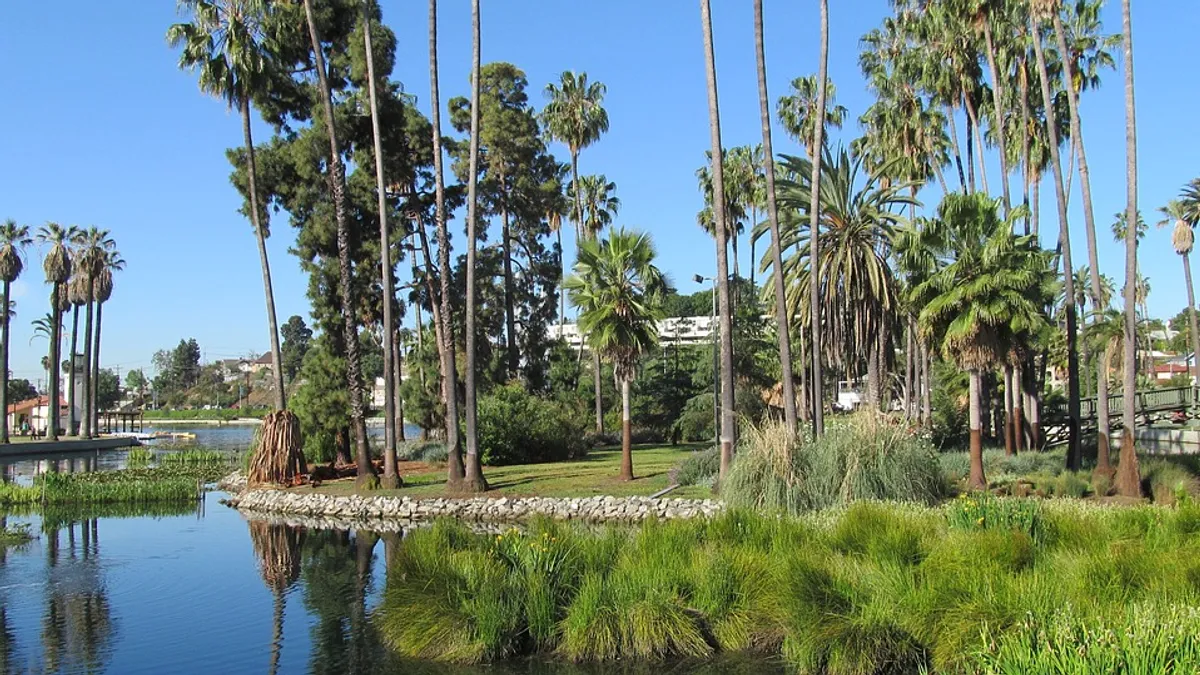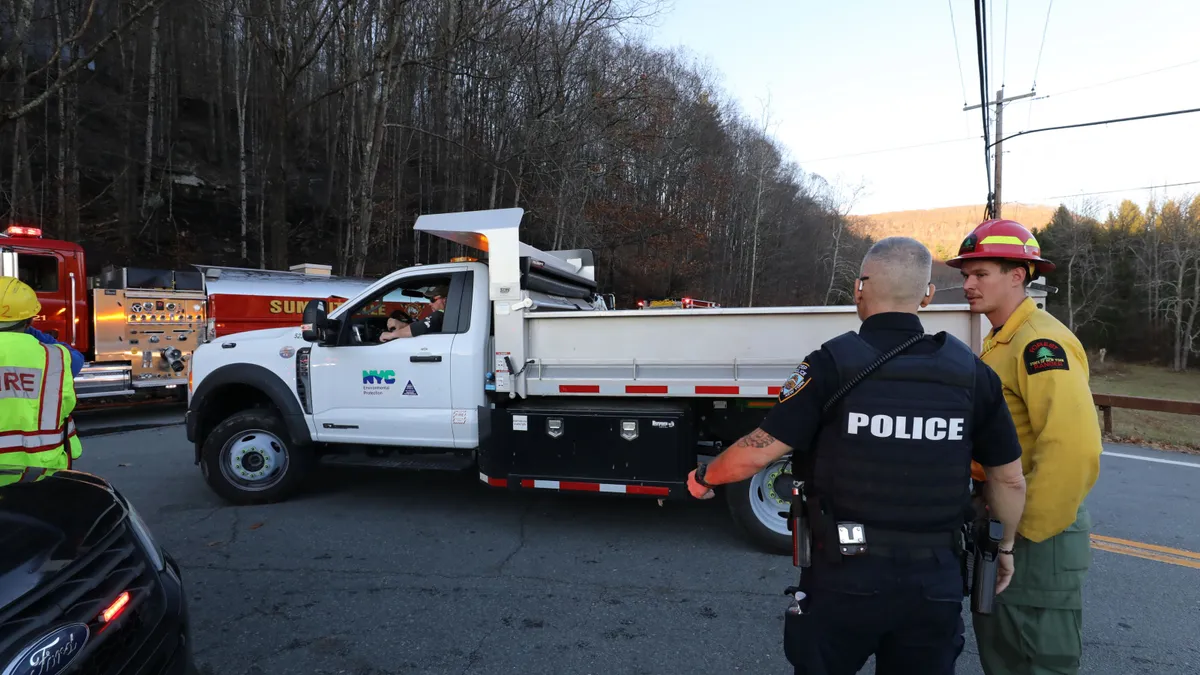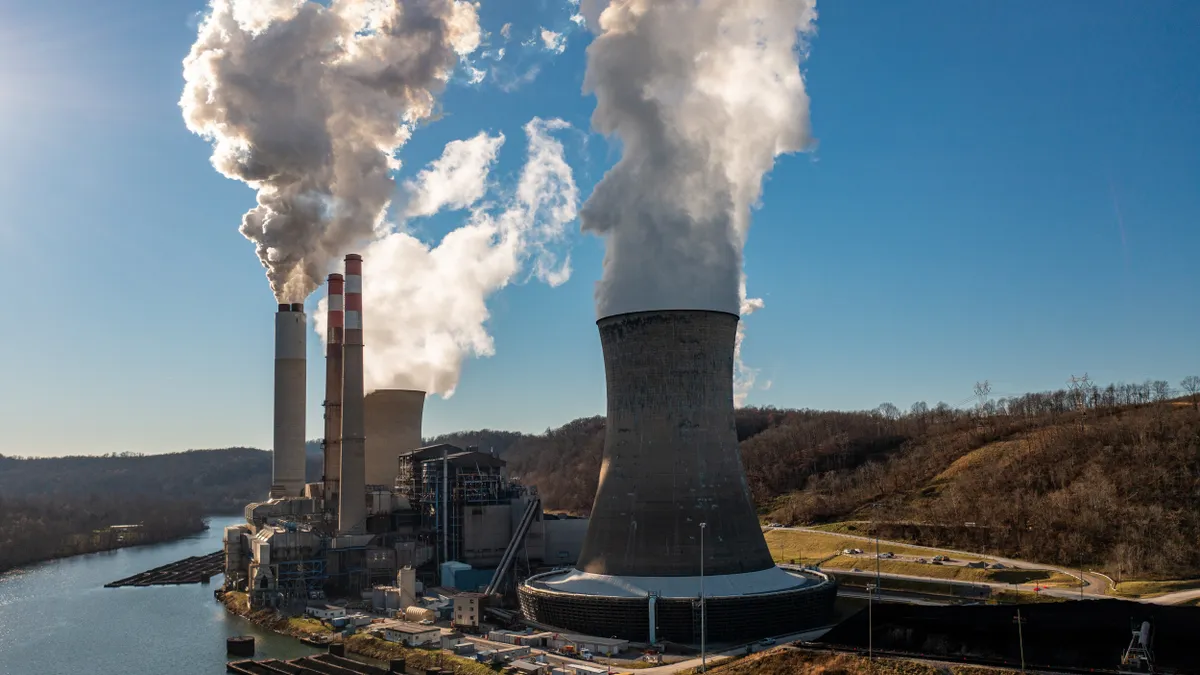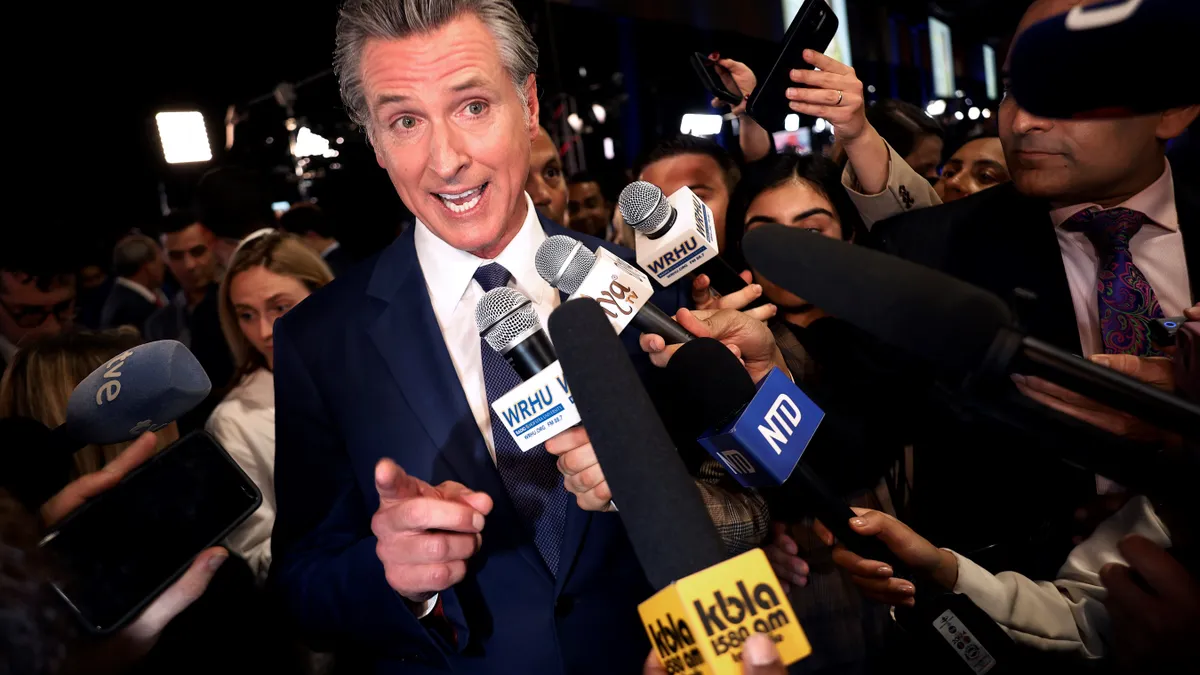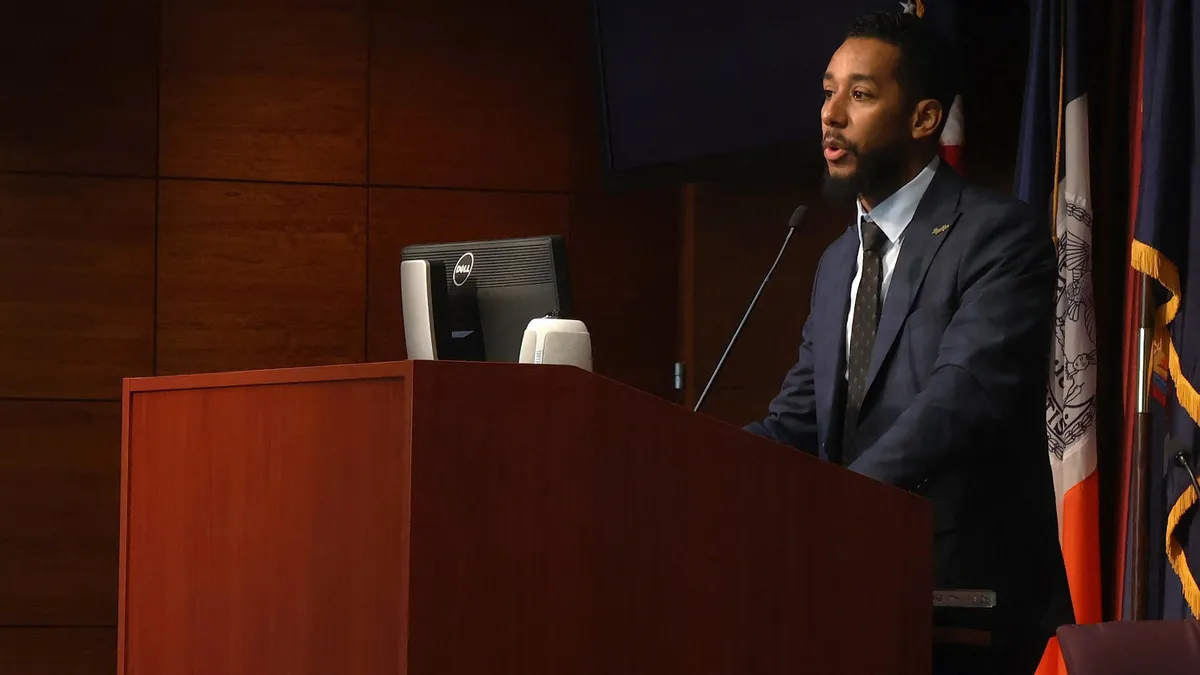Los Angeles is about to get a whole lot greener. Last week, Mayor Eric Garcetti doubled down on climate promises by appointing Rachel Malarich to a newly created position: city forest officer.
The main goal of this position is to oversee the growth of Los Angeles' urban forest and plant 90,000 trees by 2021. Malarich will also work to bring together all of the departments that manage some aspect of the city's urban forest, including the Department of Recreation and Parks, the Urban Forestry Division of the Bureau of Street Services and the Department of Water and Power.
"The trees don't know which jurisdiction they’re in, they’re all part of the same urban forest. We're looking at the broader vision and how to manage that forest," Malarich said.
In the 1990s, a task force identified the need to bring these groups together in a unified urban forestry effort. It advanced within the past year as a group of stakeholders received funding to advance an urban forestry plan.
Malarich specifically began her work in urban forestry in response to a 2008 study that looked at Los Angeles' tree canopy and how there was a disparity in canopy coverage across different communities. "I was hired by one of the nonprofits to work in one of those communities with tremendously low canopy coverage... That's where my work started," she said.
Smart Cities Dive spoke with Malarich, who will step into the new position at the end of this month, about the benefits and challenges of expanding Los Angeles' tree canopy.
This interview has been edited for clarity and brevity.
SMART CITIES DIVE: The goal of planting 90,000 trees in less than three years is really ambitious. How do you plan to achieve that?
RACHEL MALARICH: The great thing is L.A. already has a really robust urban forestry community. We have several nonprofit partners who are going out there funding for planting. We have funding through the Department of Water and Power for some planting. And within the last year the Urban Forestry Division has gotten some additional funding for a planting crew on their end. All these mechanisms are in place and there are community-based organizations doing work.
I really see the mayor's goal of 90,000 trees over the next three years as an opportunity to take those existing resources and partnerships and leverage them to achieve that big number. All those players have slightly different strengths. A lot of them have been doing fundraising through state grants and other formats to bring additional resources to our communities. This is going to be a chance for us to see how we make sure we're leveraging all the resources at the table to meet that goal.
Can you explain how equity plays into your goals for this position?
MALARICH: Part of it is the overarching view of the entire urban forest and how we maximize that resource for Angelenos. Part of it, within the mayor's Green New Deal, is talking about increasing tree canopy in our highest need areas, which traditionally have less investment in terms of canopy cover, and the subsequent benefits — reduction in heat island effect, lowering asthma rates, increased feelings of social cohesion — in those communities. His goal is for us to increase the canopy in those communities by 50% by 2028.
While planting trees will play a portion of that, we need to see some planning around how we address the barriers that have existed in those communities to having increased canopy coverage; how do we address those, whether they be cultural and community attitude based or infrastructure based? We're going to have to look at how we increase in those specific areas that are most vulnerable to the effects of climate change and really provide protections for those community members.
Could you elaborate more on the benefits of expanding the tree canopy?
MALARICH: The city of Los Angeles does not have an urban forest management plan at the moment. For a city that has the largest urban forest in the world, over 700,000 trees, it's a big deal. Every forest management plan is an opportunity to set a vision for that urban forest, to have tree inventories for what we're managing and a strategic implementation and maintenance plan for all those elements.
In the city right now with things like the biodiversity work that's going on and all the aspects around stormwater and other things... there's a real chance to do the urban forest management plan in a way that complements the mayor and city's goals to make this area more resilient in the future.
When it comes to improving quality of life for our community members, there's obviously a lot of factors that play into that. But trees are one of them. It actually is more expensive than most people would think to plant and maintain a tree over its lifespan. But compared to some other solutions or other ways to handle some of the issues within our communities, it is far less expensive.
Look at learning for our kids and the impact that being in a green environment can have for them. And for public safety and social cohesion — the amount that we feel like we're part of a community and connected to one another ...Trees are far easier to change than socioeconomic status or education level. The trees are something we have control over that can create those feelings of connected communities. We know that in the case of emergencies or other situations, it's communities that are connected that are the most able to really thrive post-incident.
"Trees are far easier to change than socioeconomic status or education level. The trees are something we have control over that can create those feelings of connected communities."

Rachel Malarich
Forest Officer, City of Los Angeles
Water is at a premium and valuable in California. Are you looking at planting certain kinds of trees that might be less resource intensive?
MALARICH: Yes. The nonprofit partners and the city work together to identify the tree species we plant in our communities and we're always thinking about water, soil type [and] climate zone. We're trying to pick trees that will be the most able to thrive in these communities over time and need the least amount of water possible.
I did a young tree care event some time ago... We had some members who were from the Midwest and they asked why we had to water these trees. I had to remind them that in L.A. we go for long stretches of the year without any water coming from the sky. So we have to water these young trees when they are newly planted for several years to help their roots get established. We're picking species that will create the root system to support themselves independent from us, but during the beginning portion they need the investment of regular watering.
The city of Los Angeles' Recreation and Parks Department is involved in a [federal] study... looking at trees that may do well here as temperatures change with climate change. They have, I think, 20 trees in eight parks that they planted several years ago and are tracking — doing a longitudinal study to see how these trees do over time and if any of them are standouts as winners, as new trees we should be planting with current and anticipated change to our climate.
There's a large cohort here that are very thoughtful about putting the right tree in the right place because a lot of the issues we have with community members who don't want trees are because they've experienced a tree that was inappropriate for the location planted there... So we want to be as careful and thoughtful as possible when picking new trees.
What are some of the other challenges of trying to bring all of these trees to an urban jungle?
MALARICH: Trees are living things, so they grow and they will have branches fall. We can't predict all these behaviors and we can't guarantee a community member won't have a limb fall on their car. I can tell them the city has increased tree trimming by an additional five crews this year with the budget increases. We now have the funding to pursue inventory... [That] hasn’t been updated in quite some time... [and it] is going to give us a better understanding of what we're managing.
With a city as large as Los Angeles, [it's a challenge] to find ways to educate the public about proper tree care and how to keep trees healthy and not have negative impacts with the type of pruning they might do on their own private property. Because 90% of our urban forest is on private property... not on public property where I hope to have some influence. So we really need community members to keep trees on their property when appropriate and make sure they're properly pruned and managed in a way that continues to make them an asset for residents.
Will you also work with other cities for ideas on how to go about achieving your urban canopy goals?
I fully intend to discuss with other cities their approaches and best practices. I'm already involved in that conversation. I've been attending the Partners in Community Forestry Conference... for the last six years. It is an opportunity for municipalities and nonprofit groups across the country to share what they're learning in their communities, whether it be science tying trees to stormwater capture or picking new species or tracking data... I'm hoping the relationships I built there will be ones I can draw on now in this role.
Any last thoughts on what you're bringing to this position and your goals?
This is a really exciting time for me with the momentum in the city right now in terms of forestry. Some other players that have moved into different positions recently make me really excited about what's possible for the urban forest. The city is starting to work on finishing their inventory, the Recreation and Parks inventory is partially completed and... we've got the urban forestry management plan.
There's a real shift happening that I think is exciting and I appreciate the investment from the mayor and the city to have a position that looks solely at moving that forward instead of it being under many different, well-meaning people trying to move things forward. I'm honored to have the opportunity to do that.
I work for... the communities that don't have the significant investment in tree canopy cover and haven't always had someone able to give the time and attention to addressing their concerns. There's so many different aspects affecting these communities so trees are not always the high priority. There's other issues that they care about. But my work has had me constantly looking at how we acknowledge, listen to and build with communities these plans for changing the community in terms of trees. My passion in that and the fact that it lines up well with the goals the mayor put forward makes me really excited for what's coming next.



